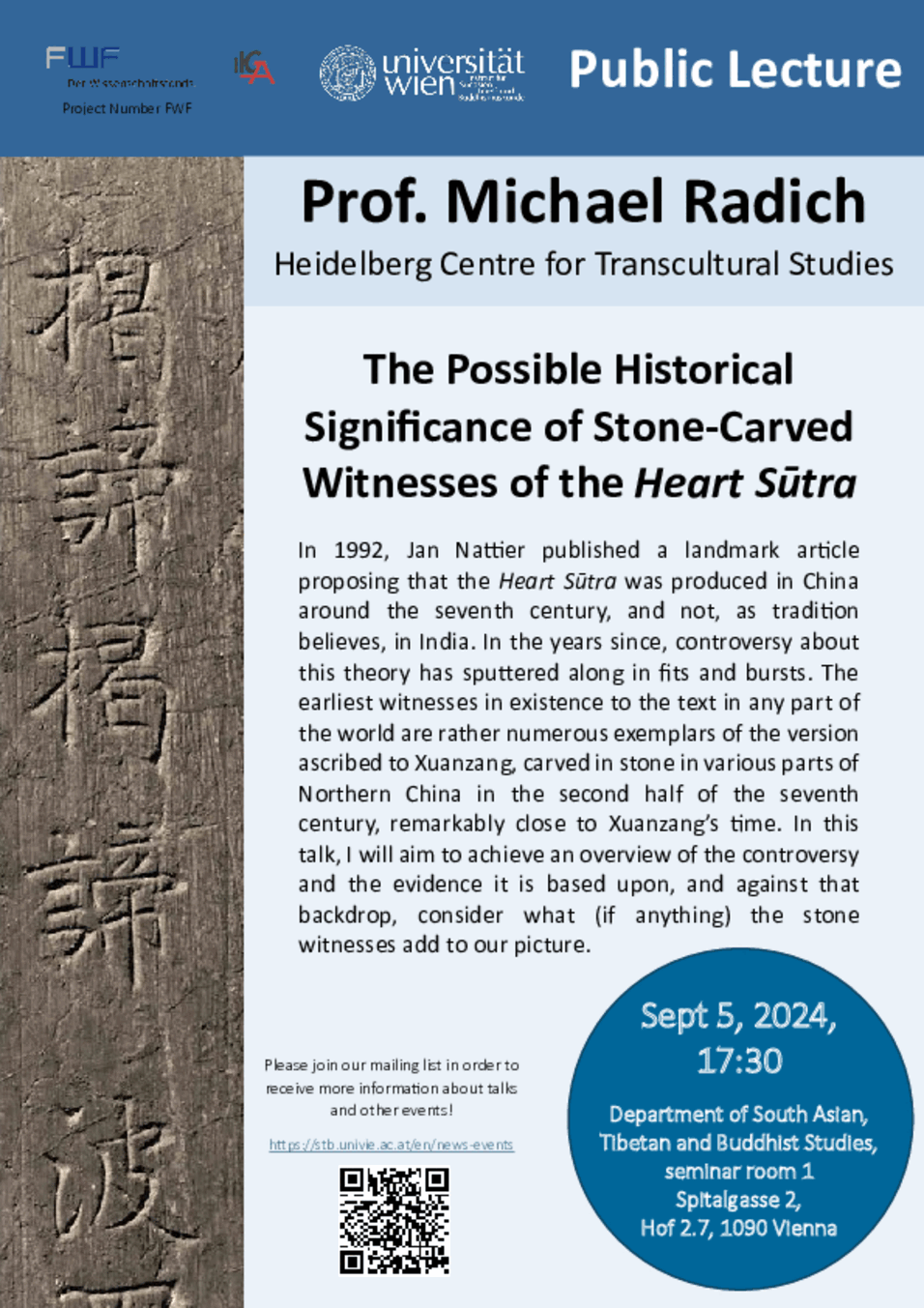In 1992, Jan Nattier published a landmark article proposing that the Heart Sūtra was produced in China around the seventh century, and not, as tradition believes, in India. In the years since, controversy about this theory has sputtered along in fits and bursts. The earliest witnesses in existence to the text in any part of the world are rather numerous exemplars of the version ascribed to Xuanzang, carved in stone in various parts of Northern China in the second half of the seventh century, remarkably close to Xuanzang’s time. In this talk, I will aim to achieve an overview of the controversy and the evidence it is based upon, and against that backdrop, consider what (if anything) the stone witnesses add to our picture.
The Possible Historical Significance of Stone-Carved Witnesses of the Heart Sūtra
05.09.2024 17:30 - 19:00
Organiser:
Institut für Südasien-, Tibet- und Buddhismuskunde (ISTB)
Location:
Seminarraum 1 des ISTB, Campus der Universität Wien, Spitalgasse 2, Hof 2.7, 1090 Wien
Related Files
- 2024-09-05_-_Radich.pdf 493 KB

